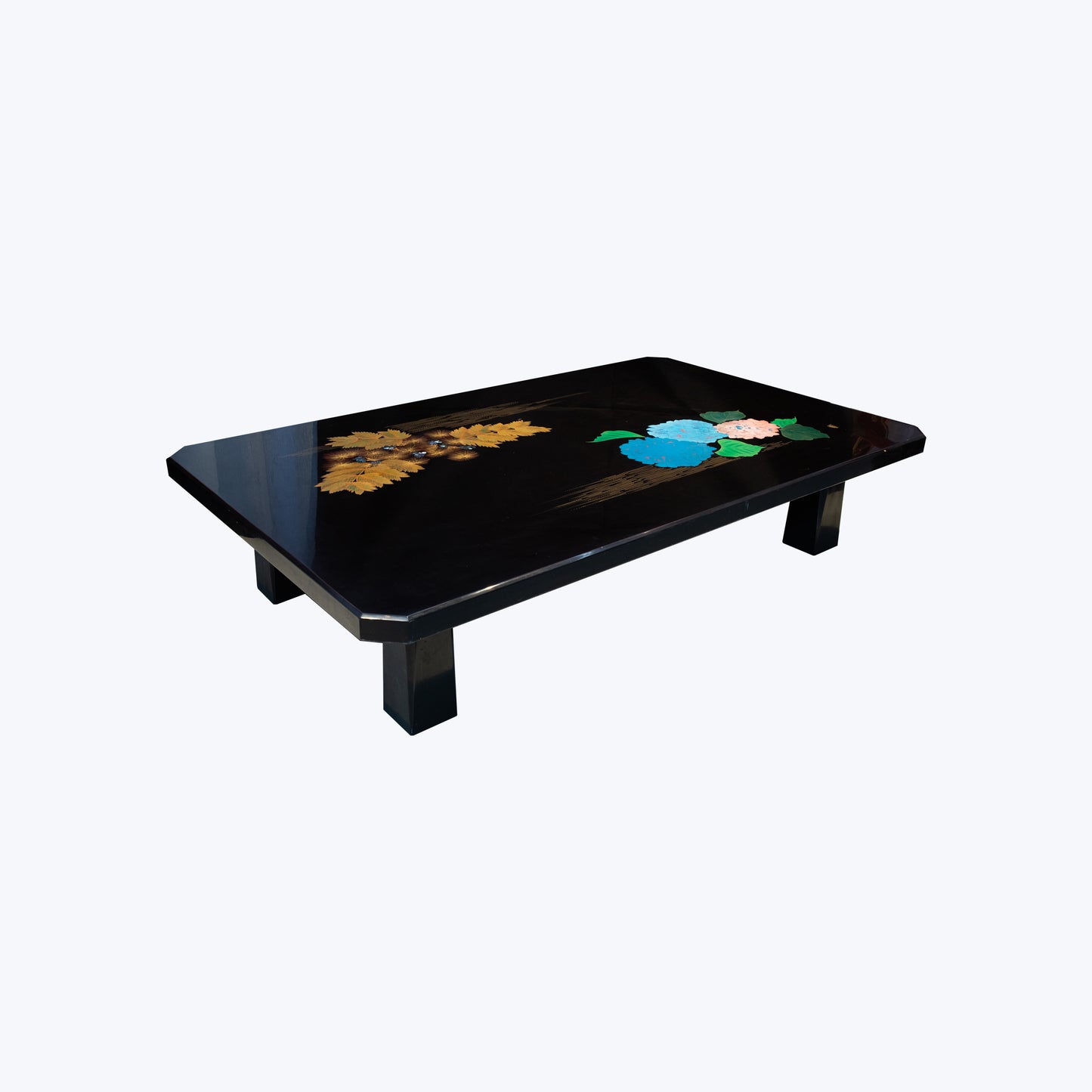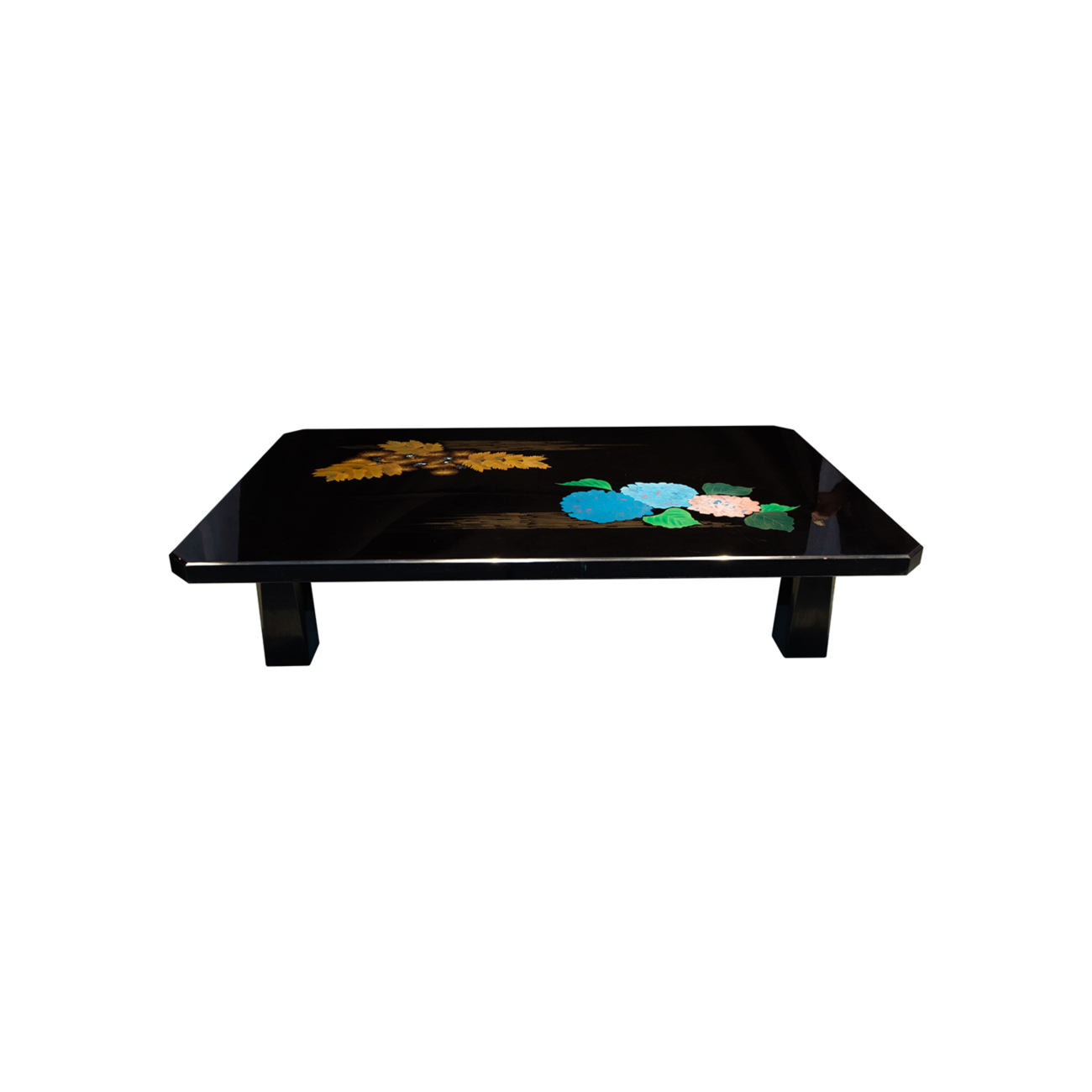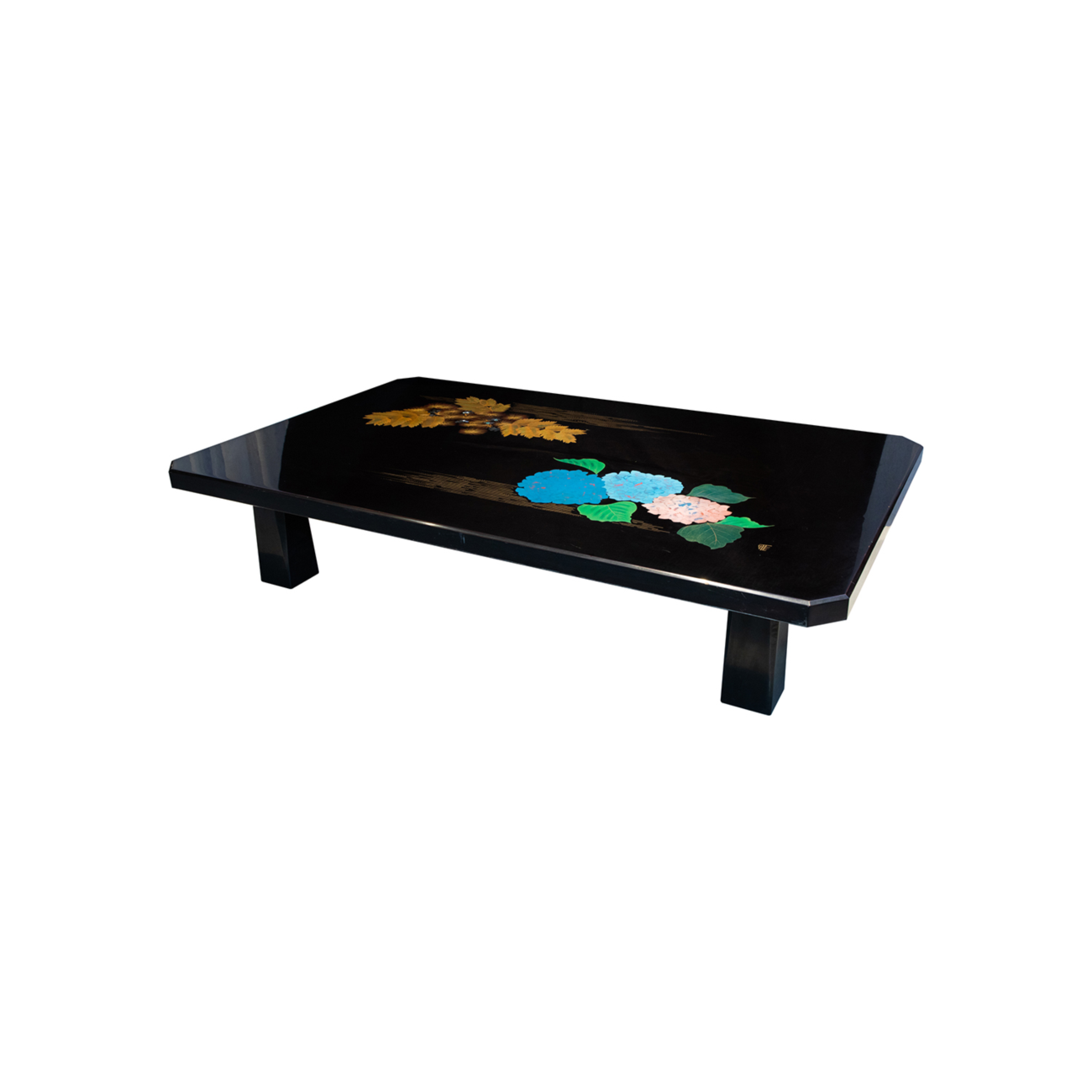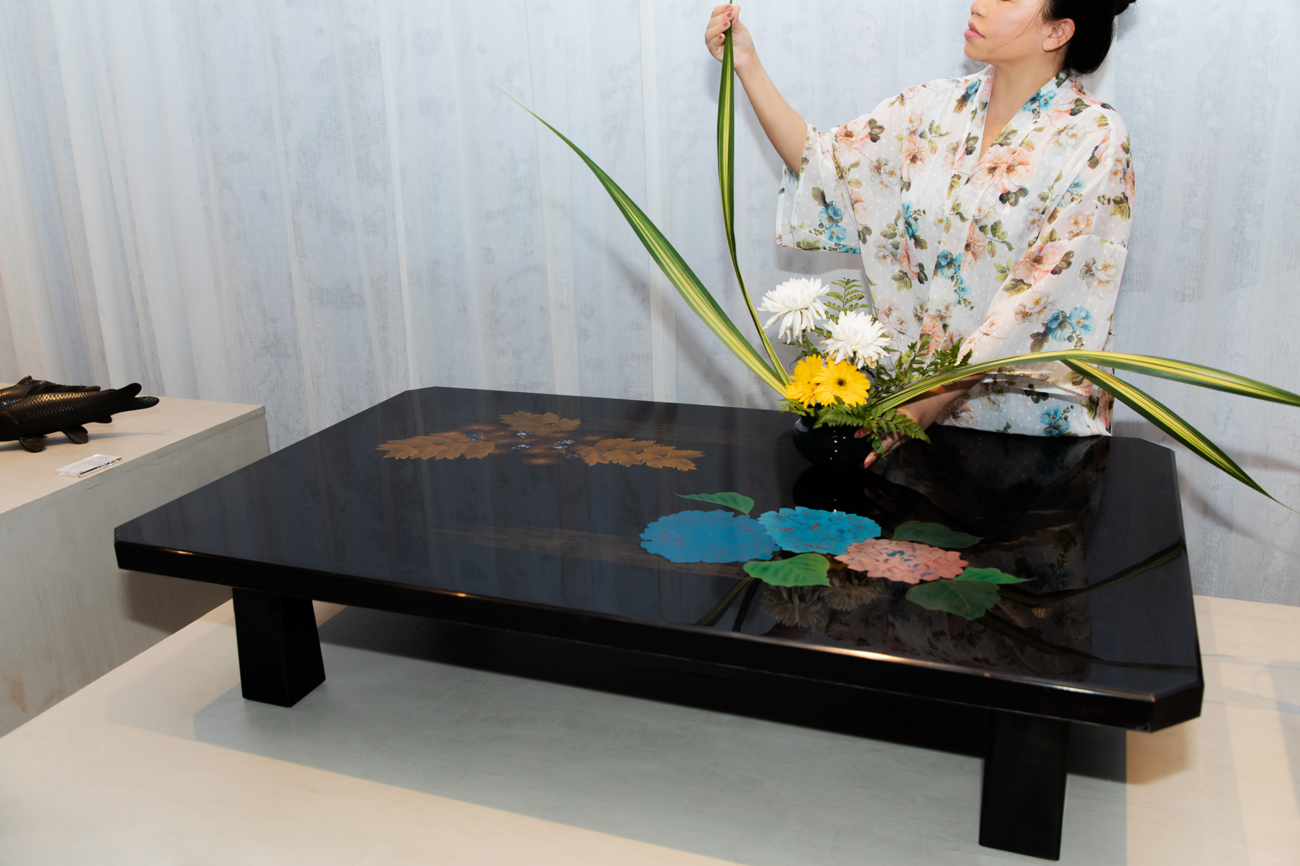



| Japanese lacquer Maki-e and shell inlaid table from the Meiji period (1868-1912), made in Circa 1870-1890. Entertainment tables like these were found in almost every house of the aristocrats, nobles and royal houses. Maki-e is a distinctive Japanese lacquerware technique that is said to have developed around 1200 years ago. It involves using a fine brush to paint a picture with lacquer on the surface of a vessel, and then sprinkling gold powder on the surface before it dries, creating a design. The word maki means to sprinkle and e means picture. Along with the gold sprinkiling of the Mak-e technique, the raden technique has been employed, which is a decorative technique that uses the iridescent parts of seashells like abalone, turban shells, and pearl oysters, which are shaved very thinly. Ra means a spiral shell and den means to decorate. The technique was conveyed to Japan from China about 1300 years ago, and marvelous examples can be seen at the Shoso-in Treasure House in Nara. This Japanese Lacquer collection is a result of the von Buren trips to Japan and its various antique fairs, where this entire lot was collected, that ranges from 70 to over 250 years. Size: 91.5(W) x 152(L) x 33(H) cms. Weight: 23 kgs. |